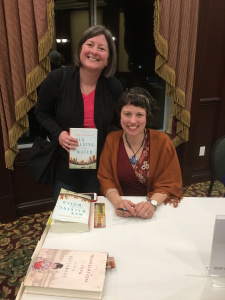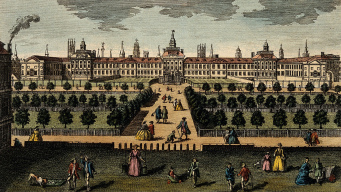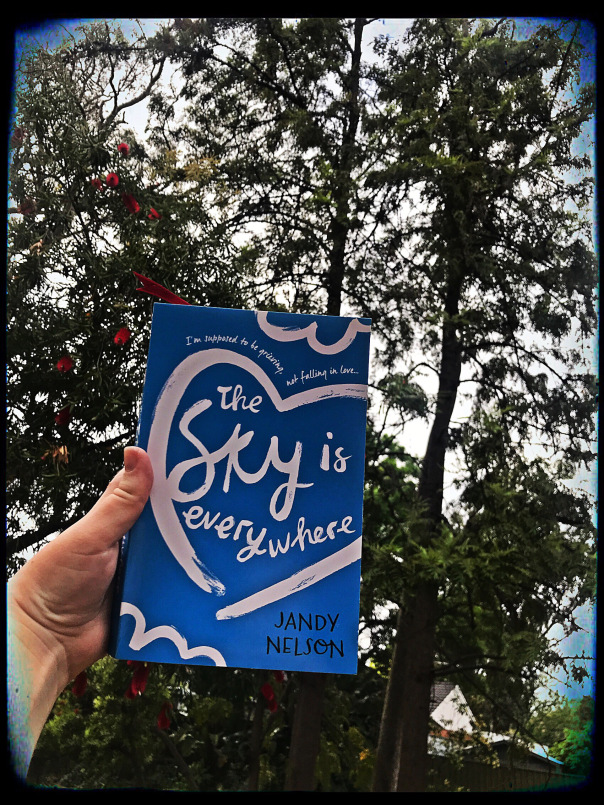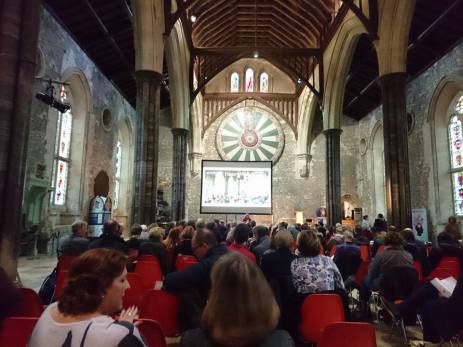
On Saturday just gone, my partner and I took the short train journey to spend an evening in the beautiful city of Winchester. I’d booked tickets a while back for the BBC History Weekend, particularly to hear Ian Mortimer and Janina Ramirez – we don’t talk about how I missed out for tickets to see Dan Jones, it’s still a bit of a sore point how quickly it sold out. At any rate, we arrived with just enough time to have a spot of dinner – the place we wanted to go didn’t start serving food until later so we decided on an Italian…an Italian that served me with a fish bowl of wine and plate of incredibly spicy pasta arabbiata.


The first talk, held within the Great Hall of what was once Winchester Castle, started at 6pm and was headed by Dr. Ian Mortimer, author of the fantastic “Time Travellers Guide” series of books. This talk concentrated on his latest book about Restoration England. Mortimer gave an A-Z of Restoration life, a step by step guide as it were as to what you could expect if you were to find yourself living in Charles II’s England. And it was brilliantly done. We learned to take long johns with us because of the freakishly cold weather, toothpaste because rotten teeth could lead to death (!) and to take plenty of antibiotics! As well as that Mortimer told us of death rates, what you could expect to eat and drink, the cost of tea and the promiscuity of…well, everyone.
As I’ve long had a soft spot for the Seventeenth Century (thank you battlefield archaeology of the English Civil War), I found Mortimer’s talk to be both interesting and enlightening. He was an absolute pleasure to listen to, really bringing to life just what you could expect if you woke up one morning in 1660.
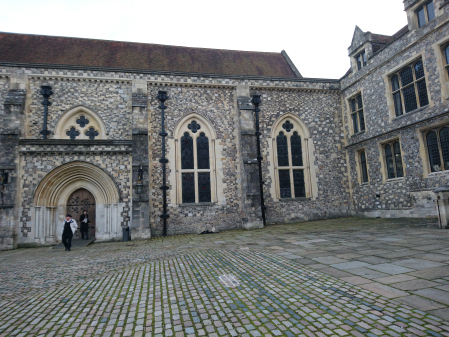
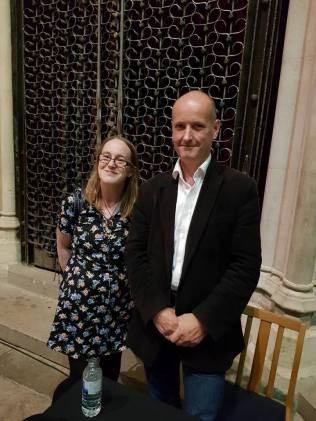
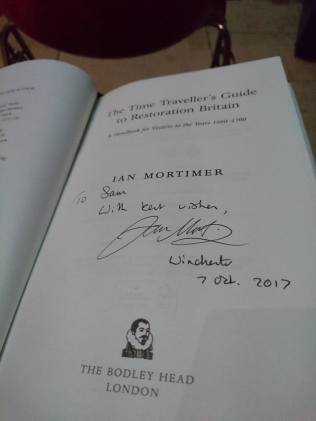
After Mortimer has finished speaking I went and had my copy of “The Time Travellers Guide to Restoration England” signed, a brief chat with him and a picture before finding a seat at the front ready for Janina Ramirez’s talk. With an hour and a quarter to kill, I had a bit of a wander around the Great Hall before settling down to wait.
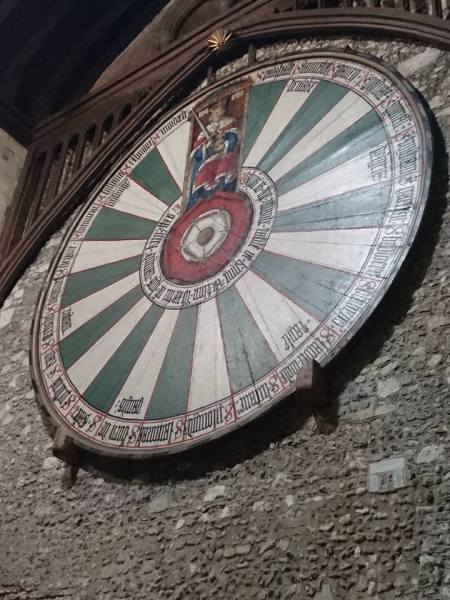
The small stage upon which the speakers gave their talks was set in front of the iconic Round Table. The HUGE round table dates to the mid thirteenth century although the paint work that covers it today was a later Tudor edition and depicts Henry VIII in the seat of King Arthur. Whilst I was at University in Winchester I did a project on this fascinating table – would you believe that during the English Civil War, Parliamentarian soldiers used it as target practice?!
Dr Janina Ramirez took to the stage at 8.15pm and I have to admit I was SERIOUSLY looking forward to hearing her speak. Ramirez has long been an inspiration of mine and I knew that her talk on “Reformation or Revolution – The Death of the Medieval World?” would be utterly brilliant. From the moment Ramirez started to speak she exuded complete enthusiasm for her subject, holding the attention of her audience through every second of her lecture. This is the mark of a brilliant historian and public speaker – pulling your audience in and holding their interest throughout is absolutely key. And the subject of her lecture was much closer to my current interests and specialisms – as you all know, my latest book is a brief history of Savonarola and it is my viewpoint that he was one of the key players in Church reform. And his works influenced Martin Luther who was one of the key players in the Protestant Reformation. So it’s all linked together.
What I found particularly uplifting was hearing Ramirez tell the crowd that there was more to the English Reformation than just Anne Boleyn. It was SO nice to hear when so many people are still of the opinion that Anne Boleyn was the driving force behind it all. She wasn’t. There was a myriad of factors including the spread of reformist ideas from Europe, corruption, the belief that monks were taking liberties….the list goes on and on and on. What we have to remember as well is that although Henry VIII and his advisors began the English Reformation, Henry VIII died a Catholic. He wasn’t protestant. Indeed, the idea that monarchs should only be protestant only really came into play after James I. It was all very interesting stuff and certainly eye-opening, especially when you realise just how much the monasteries did for the communities they were in before they were dissolved.
I’d brought a copy of Ramirez’s book on Julian of Norwich with me and following her talk I went up to get it signed. One of the first things she said to me was that she loved my tattoos and when I pointed out that the newest one was the Borgia coat of arms, she said “That’s what I was getting at when I mentioned about powerful Popes!” I also gave her a copy of my new book which, I have to admit, was one hell of a moment for me – she flicked through it and said she was really looking forward to reading it. We had a lovely chat, briefly talking about Savonarola before we had to get away for our train home – that and I was feeling slightly guilty about keeping the line held up for so long!
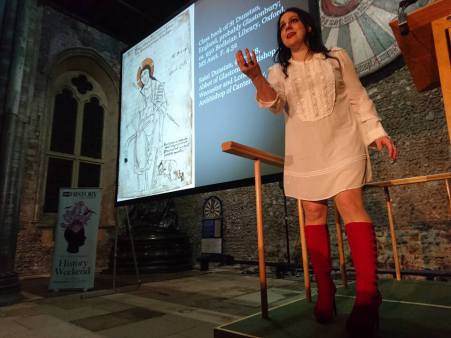
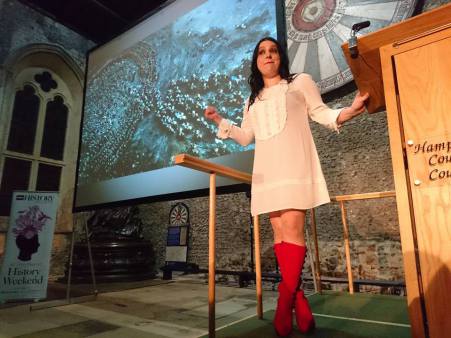
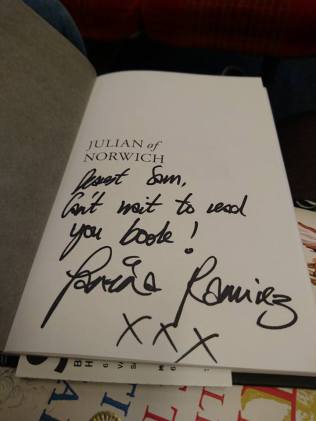
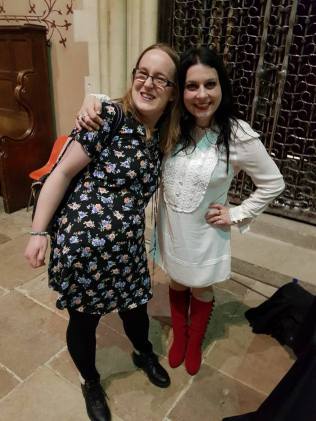
All in all, a lovely evening was had all around and I was very impressed with BBC History for putting on this brilliant event. The tickets were excellent value for money and I shall certainly be looking to go again next year.
Share this:
